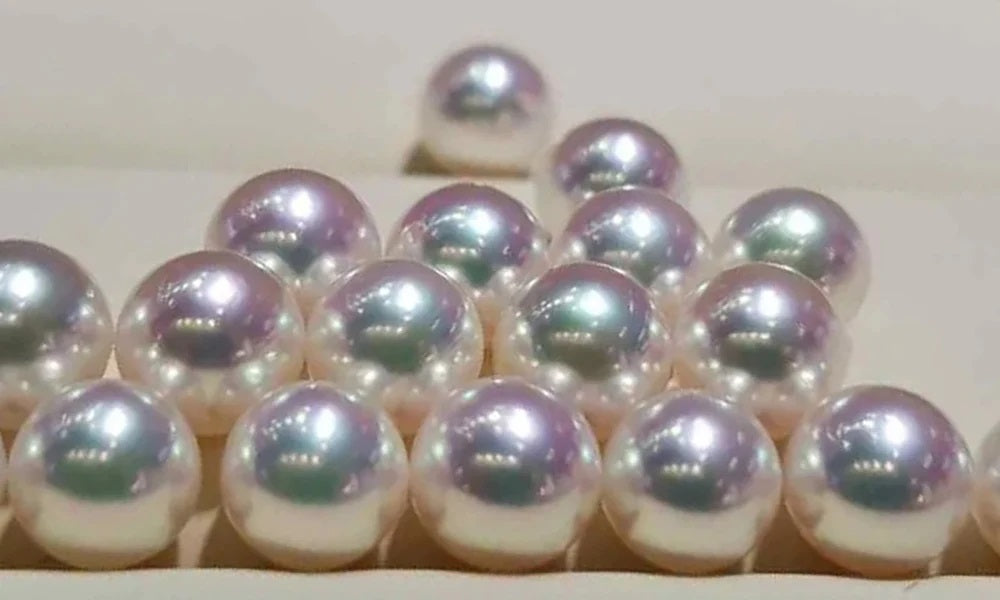Eye Candy
CARVED BRONZE EDISON PEARLS
We absolutely loved finding these one-of-a-kind hand-carved Edison Freshwater pearls in an intense Bronze color. Would you wear them?
You Asked ...
Every day we receive questions from customers all over the world about pearls. We decided to post our answers here for every one to read!
What Are Tahitian Pearl Overtones?
We Answer:
The legendary Black pearl born in the tropical lagoons of the French Polynesian islands is infamous for its rainbow of naturally occurring colors and overtones that need no enhancements to dazzle the eye.
Pearl specialists divide pearl color into two parts: the primary base, or body color, and the secondary iridescent color that appears to "float" over the pearl's surface, called the overtone.
Tahitian Body Colors
Tahitian pearls aren't the only naturally colored "black" pearl, but they are the most famous! There are Fijian pearls cultured using an oyster species that is closely related to the Tahitian, and the colorful Sea of Cortez pearls from the Gulf of Mexico using a species of oyster unique to the region.
All "black" cultured pearls feature a naturally dark base, or primary body color that occurs in a range of hues from very pale silver colors to jet black. The majority of Tahitian pearls will feature a medium to dark grey body color.
Tahitian Pearl Overtones
Here's where the rubber meets the road! Tahitian pearls are world-famous for their endless array of colorful overtones.
The most famous Tahitian overtones are:
- Peacock
- Green
- Blue-Green
- Cherry / Aubergine
- Silver to Steel

Peacock Overtones
“Peacock” is the most famous of all Tahitian pearl overtones. It shows up as a mix of green, rose and gold colors … the Peacock overtone has many variations depending on how warm or cool the green colors are, and how much rose or gold is present.
Peacock can also be incredibly intense like the Gem Quality Tahitian pearl necklace shown above, or light and airy. Darker body colors nearer to jet black can help enhance this effect, while body colors closer to silver can make the overtone saturation appear lighter.

Green Overtone
Tahitian pearls displaying Green overtones are one of the most commonly seen colors besides Silver or Steel. Green can be warm or cool, dark and saturated or pale and shimmery, if laid over a light grey body color.
Pearl shape also has a big role to play in determining the color saturation of overtones, too! For instance, circled baroque Tahitian pearls often feature very intense overtones due to the uneven nacre layers, while perfectly round Tahitians will feature less concentrated colors, more evenly distributed over the entire surface of the pearl.

Blue-Green Overtone
Blue-Green Tahitian pearl overtones are a mix of light Blue and darker Green hues, and can be beautifully complex. Blue-Green overtones are probably the third most common Tahitian pearl overtone behind Silver and Green.
Blue-Green is usually a cool-toned overtone, as both hues are on the cool side of the color spectrum. Blue-Green is most often a medium to dark saturated color, dependent on the depth of the body color.

Tahitian Cherry / Aubergine Overtone
One of the more famous, but rare, overtones is the Cherry to Aubergine color. 95% of the time, this overtone is laid over a dark to near jet black body color, relying on the saturation of the overtone to really pop.
This is a combination of very strong Rose with dark Blue hues, creating an overtone that can range from an eye-catching Reddish color to the exotic purples, which is where the term "Aubergine" gets its name, which is French for "eggplant".

Tahitian Overtones Silver & Steel
Silver and Steel overtones are perhaps the most common of all for Tahitian pearls. These overtones show up as a whitish patina over the base body color. The best Silver Tahitian pearls feature an overtone laid over a light gray body color, and may feature additional tints of blue-green and green. Steel overtones are very commonly seen in larger pearls.
The rainbow of Tahitian pearl overtones is nearly endless due to the variety of body color and overtone combinations, taking into account the depth and saturation/intensity of the two. This makes Tahitians, and other naturally black pearls, some of the most unique, colorful and interesting cultured pearl types in the world today!
Which overtone is your favorite?
Weekly Video

Featured Pearls
Multi-Color Tahitian & White South Sea Baroque Pearl Necklace, 9-12mm
- This exquisite multicolor baroque shaped Tahitian and White South Sea Pearl Necklace features 9-12mm pearls, handpicked for their radiant luster.
- The pearls are strung and double-knotted with the finest silk thread.
- This necklace is packaged in a beautiful jewelry gift box.

![]()
![]()























































